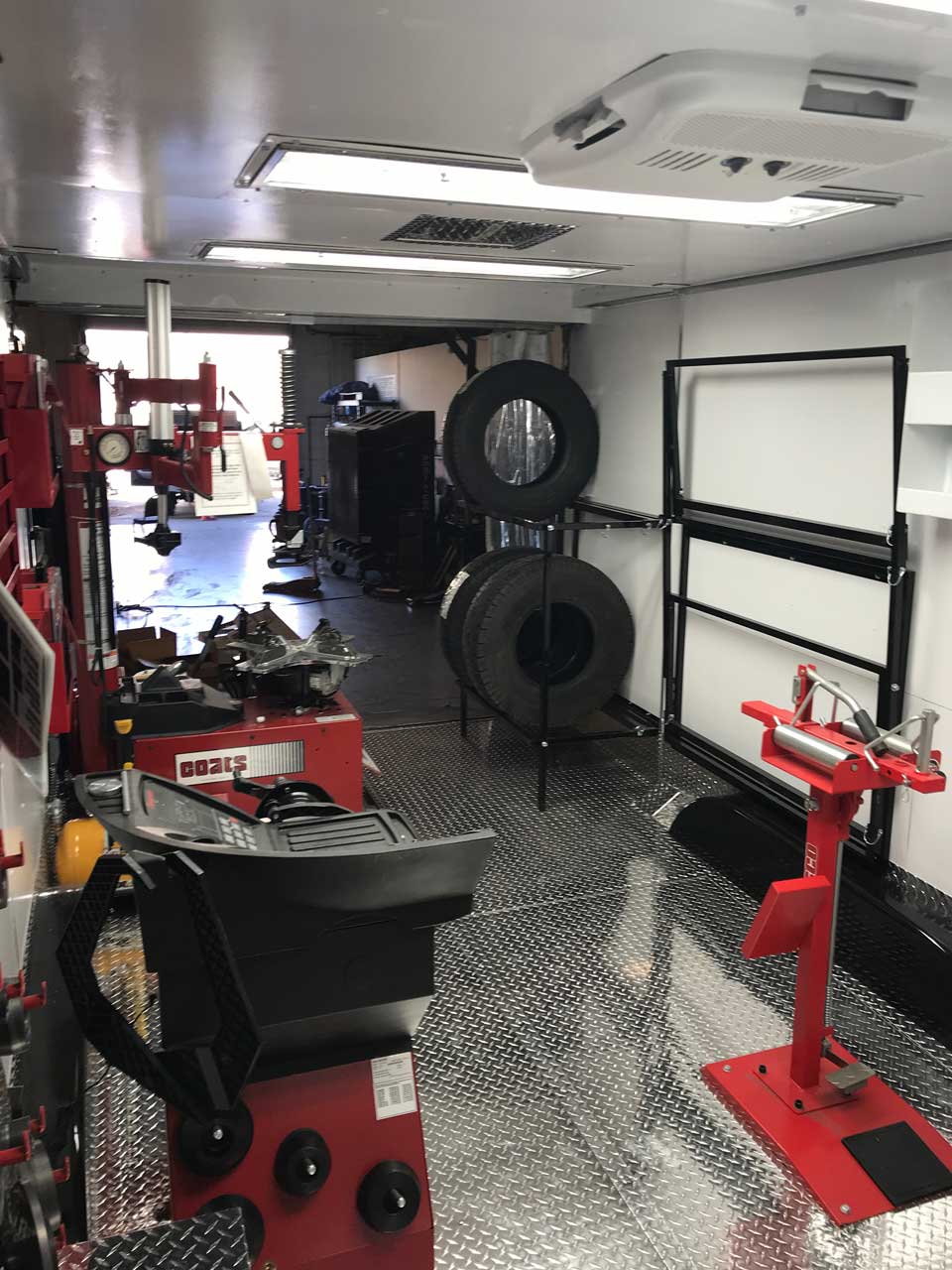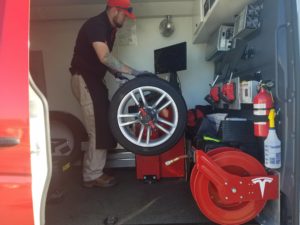Premium Mobile Tire Replacement Las Vegas - Top Quality Assured
Tire Solution: Proven Techniques for Optimum Tire Upkeep and Treatment
From making sure appropriate tire pressure to normal rotation and positioning, there are tested techniques that can significantly prolong the life-span of your tires and boost total driving experience. Let's dig right into the world of tire solution and discover the tricks to maintaining your tires in top-notch shape for the long haul - Mobile Tire Replacement Las Vegas.
Importance of Tire Stress
Proper tire pressure is an essential factor in ensuring optimal automobile efficiency and security when driving. Preserving the suggested tire stress degrees given by the supplier supplies numerous advantages. First of all, ample tire stress advertises much better gas efficiency, as under-inflated tires can cause boosted rolling resistance, triggering the engine to function tougher and take in more gas. Appropriate tire stress makes certain also step wear, boosting tire long life and conserving cash in the lengthy run by delaying the requirement for early substitutes. Additionally, effectively inflated tires contribute to enhanced handling and stopping capacities, critical for safe driving in numerous road conditions. Over-inflated tires, on the various other hand, can lead to lowered traction and a harsher adventure. On the other hand, under-inflated tires are prone to getting too hot, which can lead to crashes and blowouts. Consistently adjusting and inspecting tire pressure, specifically soon trips, is an easy yet effective method to boost vehicle performance, extend tire lifespan, and prioritize security when driving.
Tire Rotation Standards
When considering tire turning guidelines, it is important to comprehend the relevance of this maintenance job in making best use of tire life expectancy and maintaining optimal car efficiency. Tire turning entails altering the setting of each tire on an automobile to make certain even tread wear. Front tires often tend to use a lot more promptly than rear tires because of guiding forces, making routine turning critical for well balanced wear patterns. The suggested rotation pattern differs relying on whether a lorry is front-wheel, rear-wheel, all-wheel, or 4x4. Typically, tires should be revolved every 5,000 to 7,500 miles, or as encouraged in the car handbook. Neglecting tire turning can result in unequal wear, impacting handling, traction, and possibly compromising lorry safety and security. By adhering to appropriate rotation standards, motorists can expand the life of their tires, enhance gas effectiveness, and boost general driving experience. Normal turning is a basic yet effective upkeep method that contributes substantially to tire longevity and vehicle performance.

Advantages of Wheel Alignment
Making certain proper wheel placement after tire rotation is crucial for preserving balanced wear patterns and making best use of automobile performance. Additionally, appropriate wheel positioning assists to prolong the life-span of your tires. Misaligned wheels can trigger uneven tire wear, leading to early tire replacement and increased upkeep prices.

Tire Footstep Depth Examine
Performing a routine inspection of tire step depth is crucial for preserving risk-free driving problems and extending the life expectancy of your tires. The walk on your tires plays an essential duty in providing traction, particularly in wet or slippery conditions. To examine your tire step deepness, you can make use of a tread deepness gauge or the cent examination. The recommended tread depth is at least 2/32 of an inch. If the step deepness is below this limit, it is time to replace your tires to make certain optimum efficiency and safety when traveling. Irregular step wear can show issues with tire placement, suspension, or stress, highlighting Read Full Report the value of get more routine tread deepness checks. Ignoring to monitor and preserve correct step deepness can lead to decreased hold, longer stopping distances, and an increased risk of hydroplaning. By incorporating tire tread depth explore your regular maintenance schedule, you can drive with self-confidence understanding that your tires remain in top condition.
Seasonal Tire Evaluation
Seasonal tire inspection is a fundamental aspect of tire upkeep that makes certain tires are all set to deal with the difficulties positioned by various climate problems. In preparation for winter, it is necessary to examine the tire stress consistently as cool temperatures can cause tire stress to go down. By performing routine seasonal tire inspections, chauffeurs can extend tire lifespan, boost gas efficiency, and most notably, make sure a safe and secure driving experience in varying climate conditions.
Conclusion
Finally, maintaining appropriate tire pressure, turning tires frequently, aligning wheels properly, keeping an eye on tread depth, and carrying out seasonal assessments are important techniques for optimal tire treatment. By adhering to these confirmed techniques, motorists can guarantee their tires last longer, perform much better, and add article source to general car safety and security. It is essential to focus on tire upkeep to avoid crashes, improve fuel performance, and lengthen the lifespan of tires.
Ample tire stress advertises better fuel effectiveness, as under-inflated tires can lead to raised rolling resistance, triggering the engine to work harder and take in even more gas.When considering tire turning guidelines, it is necessary to recognize the significance of this maintenance task in making best use of tire life expectancy and keeping optimum vehicle performance. Seasonal tire evaluation is a fundamental aspect of tire upkeep that ensures tires are ready to face the difficulties posed by different climate problems. By performing regular seasonal tire assessments, drivers can prolong tire lifespan, enhance gas performance, and most importantly, make certain a protected driving experience in differing weather conditions.
In verdict, keeping appropriate tire stress, turning tires frequently, lining up wheels appropriately, keeping an eye on tread depth, and conducting seasonal inspections are essential techniques for optimal tire care.